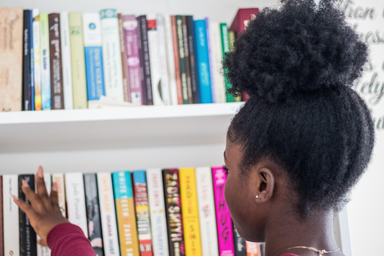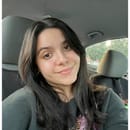TW: Mentions of sexual abuse, rape, and incest.
Spoilers for The Bluest Eye by Toni Morrison follow.
When I was a kid, I was allowed to read anything I wanted. I used to roam libraries for hours at a time. At the end of my rotations, I would usually have a stack taller than me to carry over to the checkout desk.
I’ve grown since then, but my love for reading has never changed. To me, schools and libraries have always been sanctuaries for knowledge. If a book I wanted to read wasn’t readily available, the librarian on staff was more than happy to provide me with the appropriate resources. It never occurred to me that I was enjoying a freedom that has been denied to so many.
In May 2023, PEN America, Penguin Random House, and a diverse group of authors united with parents and students to file a federal lawsuit challenging the removal and restrictions of books in school libraries, claiming this violated their right to free speech. Several of the books in question were written by non-white authors and discuss race and/or LGBTQ+ identity.
The state this lawsuit was filed in? If you guessed Florida, you would be right.
Seeing my home state become a battleground for the literary community, which is actively fighting against this censorship, has been heartbreaking. Many counties in Florida have banned books completely from school libraries, resulting in them being removed from the shelves.
I decided to read The Bluest Eye by Toni Morrison, which is one of the most consistently banned books in the United States. It’s banned in 12 Florida counties as of October 2023. Ironically enough, when I bought the book from Goodwill, one of the pages had been ripped out.
The Bluest Eye is the story of Pecola, a Black girl growing up during the Great Depression, whose most desperate wish is to have blue eyes. The story is told alternatively through flashbacks to Pecola’s time with her family and her time living with two sisters, Claudia and Freida, after becoming a foster child.
Reading this book was an overwhelming experience. Morrison makes no effort to hide the ugliness that governs this world. Pecola is consistently objectified, ridiculed, sexualized, and abused by those who should support her most. In the climax of the novel, she is raped by her father and suffers a miscarriage soon afterward.
At the heart of this novel are themes of self-hatred, often facilitated by anglicized beauty standards. “The novel tried to hit the raw nerve of racial self-contempt,” said Morrison in her afterword.
If the goal was to strike a nerve, she certainly succeeded. Pecola’s most fervent desire is to have blue eyes, an iconoclastic trait that she sees as key to being beautiful in society. Blue eyes, commonly associated with whiteness, are held up as the paragon of beauty in the book.
Divided into sections based on the four seasons, readers are left to piece together her tragic story and the ways in which her life intersected with that of the other children, Claudia and Pecola. When discussing whiteness, Claudia, who is also a young Black girl, points out how she hates dolls. She is someone who rejects the standard concept of beauty, while Pecola does her best to conform to it.
The impact of this Westernized notion of beauty is immense. “Adults, older girls, shops, magazines, newspapers, window signs — all the world had agreed that a blue-eyed, yellow-haired, pink-skinned doll was what every girl child treasured,” says Claudia in the book.
The novel does a great job of making explicit the ways in which the relationship between whiteness and beauty has been used to oppress Black women, especially young girls. Morrison implies that when the visual rhetoric in media only ever represents whiteness, this is not only inherently unethical but also a dangerous message to audiences. Pecola internalizes this lack of representation and hates herself for not being able to conform to this beauty standard. Her slow erasure over the book can be linked to several instances where she is devalued or overlooked in favor of a white counterpart.
Morrison also traces the lives of each member of Pecola’s family, complicating our views on her father and mother, who are abusive to her in the present day. Through flashbacks, Morrison paints an intricate portrait of the ways both her mother and father have reacted to the various microaggressions heaped on them by society. The mother, Pauline, works as a housekeeper for a white family when once she dreamed of just getting out of her small town. The father, Cholly, was abandoned at birth and left to fend for himself after his only loving relative died. Each was a victim of their circumstances and found ways to survive in the face of prejudice. But neither is a hero, either. Morrison tells no simple stories. Each parent lets the pain and hatred inflicted on them as children inform their treatment of Pecola.
Notably, parental concern over the inclusion of The Bluest Eye in schools often stems from its treatment of incest and sexual abuse. Morrison never shies away from these topics, but that is the entire point. The parents of today want to protect their children from these harsh realities, but no one is there to protect Pecola from them in the book. Pecola may be just a character, but Black children all over the world face microaggressions every single day. Women everywhere live with the threat of sexual assault implicit in their interactions with men.
Morrison never condones rape or abuse. By incorporating these plot threads, she points out that this is the reality for many who don’t have the advantage of being privileged, whether that be in terms of whiteness, economic status, or some other identity. The ugliness that parents wish to protect their children from is what is considered normal for many.
When people initiate book bans of The Bluest Eye, they are limiting the access of students to books that provide nuanced and insightful takes on racism and prejudice. By removing this book from schools, parents and administrators aren’t doing kids any favors. They only condition them to be ignorant and unaware of the injustices faced by people of color and prevent the initiation of conversations around oppression and equality.
I thoroughly enjoyed reading this book. It was never a cozy read, but books are not always meant to be this way, nor should they be. The power of reading is its ability to instill empathy in its reader for the life of someone else. When people pick up The Bluest Eye, they get to actively learn about racism and the self-hatred many young Black women may experience when consistently told that to be white is to be beautiful. Morrison doesn’t aim to please with this book but to educate.
The Bluest Eye is currently being contested in 11 states right now. But there is work that can be done to help fight the erasure of diverse stories. One way to help PEN America in its mission to combat book bans is to donate here.
However, there is something even more important that can be done to help. The stories that are said to not be appropriate for us can be read. By doing that, there might be a chance for growth and bettering. It is an opportunity to share with people what is learned and take a stance against censorship.
If I were to roam libraries today, my stack would be much smaller. That’s what scares me most of all.
Want to see more HCFSU? Be sure to like us on Facebook and follow us on Instagram, Twitter, TikTok, and Pinterest!


